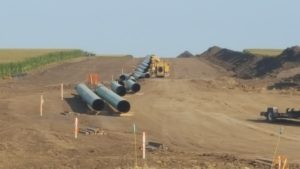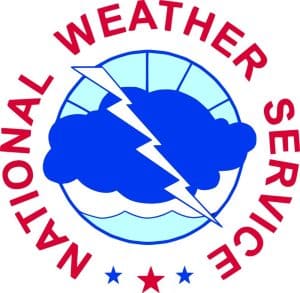Iowa DNR — Blaze orange clad hunters moving through Iowa’s timber will be a common sight when the first of two shotgun deer seasons open Dec. 5. An estimated 120,000 hunters participate in the shotgun seasons, harvesting about half of the total number of deer for the year.
“Shotgun deer seasons are important tradition for Iowa deer hunters as well as an important time for herd management,” said Tyler Harms, deer program leader for the Iowa Department of Natural Resources (DNR).
Hunters have reported harvesting more than 26,000 deer so far this year, which is about 1,000 more than this time last year, and that’s good news, Harms said.
“From our standpoint, that’s something we like to see because coming in to the season, people were concerned about reduced deer numbers due to the widespread hemorrhagic disease outbreak last year. If we project this harvest out, not factoring in any curveball Mother Nature would throw at us, we are trending to our goal of harvesting between 100,000 and 120,000 deer,” Harms said.
Iowa’s first shotgun deer season is Dec. 5-9, and second shotgun deer season is Dec. 12-20.
Changes to deer seasons
-The antlerless deer quota has been adjusted in 23 counties.
-The January antlerless deer season will not be offered this year except in certain zones for chronic wasting disease management.
-The first shotgun season buck-only restriction has been removed in Winnebago, Worth, Hancock, Cerro Gordo, Franklin, Hardin and Grundy counties.
Deer donation program
The inaugural season for the Iowa Deer Exchange has attracted 350 Iowans who indicated they were interested in receiving venison and 60 hunters willing to provide it. The deer exchange, along with the Help us Stop Hunger (HUSH) program, allows hunters an opportunity to provide high quality lean protein to their neighbors, while continuing to do what they enjoy – hunting deer.
“We’re pleased with the participation we’ve seen thus far, and the large number of registered recipients shows there’s an audience who wants venison. We’re encouraging hunters who are making their plans now to consider picking up another doe tag and registering to donate venison,” said Harms.
To sign up for the Iowa Deer Exchange, go to www.iowadnr.gov/deer then scroll down to Iowa’s Deer Exchange Program link and fill out the required fields. The database creates a map and table with information deer donors and deer recipients can use to get connected. There is no cost to participate. It is illegal to sell wild fish and game in Iowa.
Hunter who prefer to use the HUSH program are encouraged to contact a participating locker before they harvest a deer to see if the locker has any additional drop off instructions. The list of participating lockers is available at www.iowadnr.gov/deer the scroll down to the Help Us Stop Hunger link. The HUSH program is a partnership between the Iowa DNR, the Food Bank of Iowa and participating meat lockers.
Text to harvest
Hunters who harvest a deer are required to report their harvest by midnight on the day after it is tagged or before taking it to a locker or taxidermist. The hunter whose name is on the transportation tag is responsible for making the report. If no deer is harvested, no report is necessary.
New this year is the option to report your harvest via text message. Simply text the registration number on your deer tag to 1-800-771-4692 and follow the prompts. Hunters are still able to report their harvest online, by phone, or using the Go Outdoors Iowa app. Reporting using the app is straight forward, fast and easy. Hunters have their confirmation right on their phone and also receive it as an email.
Deer harvest numbers are an important component of Iowa’s deer management plan.
CWD sampling
The Iowa Department of Natural Resources (DNR) has a goal each year of collecting more than 4,600 deer tissue samples statewide to test for chronic wasting disease and the majority of those samples come from the two shotgun deer seasons.
The disease surveillance effort includes colleting a minimum of 15 samples from each county, with higher quotas assigned to counties where the disease has been found in wild deer or have high risk of the disease due to adjacent counties with positive animals. To date, the DNR has collected and submitted more than 1,100 samples for testing this year.
“We are prioritizing samples this year to try to improve the information we are getting from this important effort. The deer that give us the best opportunity to detect this disease in new areas are adult bucks,” Harms said. After adult bucks, priority goes to adult does, then yearling buck and finally yearling does.
Hunters willing to provide a sample are encouraged to contact their local wildlife biologist to arrange for the collection.
In the event that the county or priority area quota has been filled, or if the hunter is interested in testing a fawn or other nonpriority deer, hunters may choose to pay for their own test through a new partnership with the Iowa State University Veterinary Diagnostic Laboratory.
Hunters will need to contact their local wildlife staff and ask how they can get their deer tested through the new hunter submitted option. The DNR will collect and submit the sample on their behalf. There is a $25 fee for the laboratory to run the test. Results should be available within 2-3 weeks.
Deer Management Zones
Special antlerless deer licenses are available, outside of regular county quotas, in specific areas where the DNR would like to focus additional harvest to increase deer samples as part of its surveillance effort for chronic wasting disease.
The DNR has identified 12 of these deer management zones in nine counties. Information on these zones, where to buy a license and local contacts for samples is on pages 33-34 of the Iowa Hunting Regulations. Boundary maps are available online at www.iowadnr.gov/cwd. A stipulation of purchasing one of these licenses is that successful hunters are required to provide a tissue sample.









